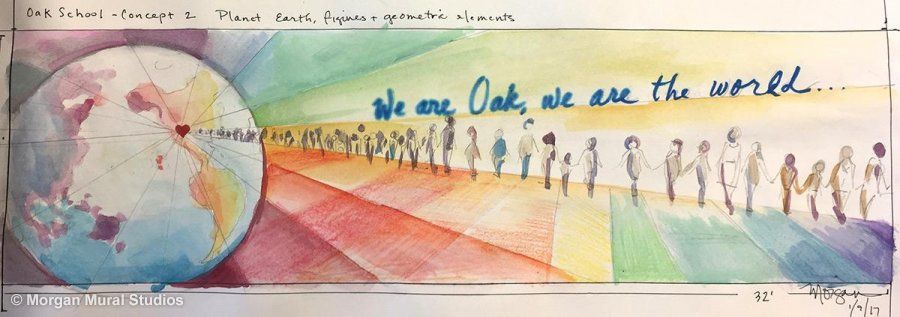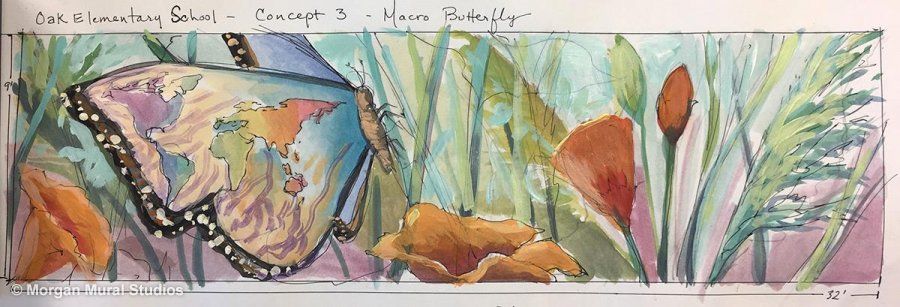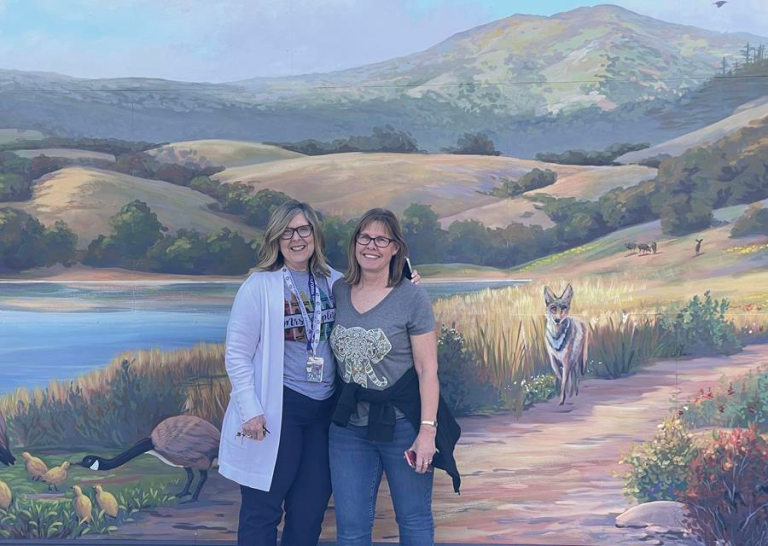Peace Takes Flight at Oak Elementary
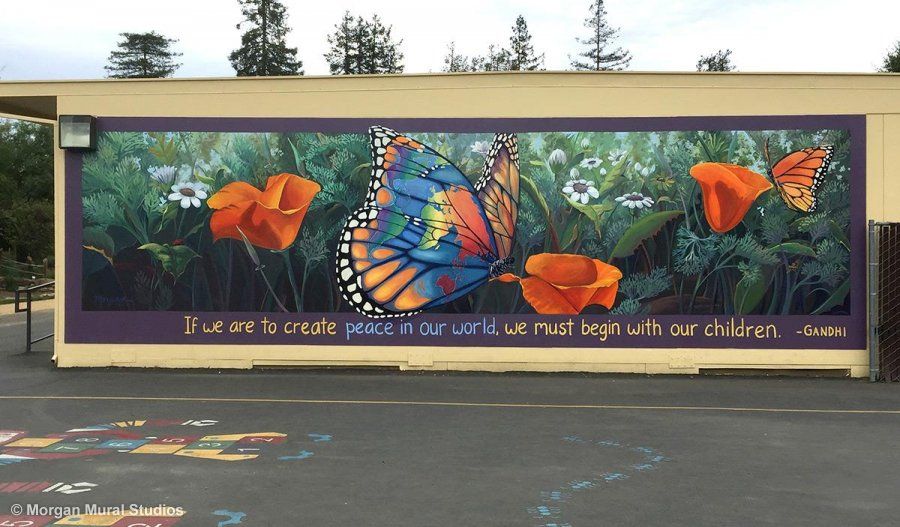
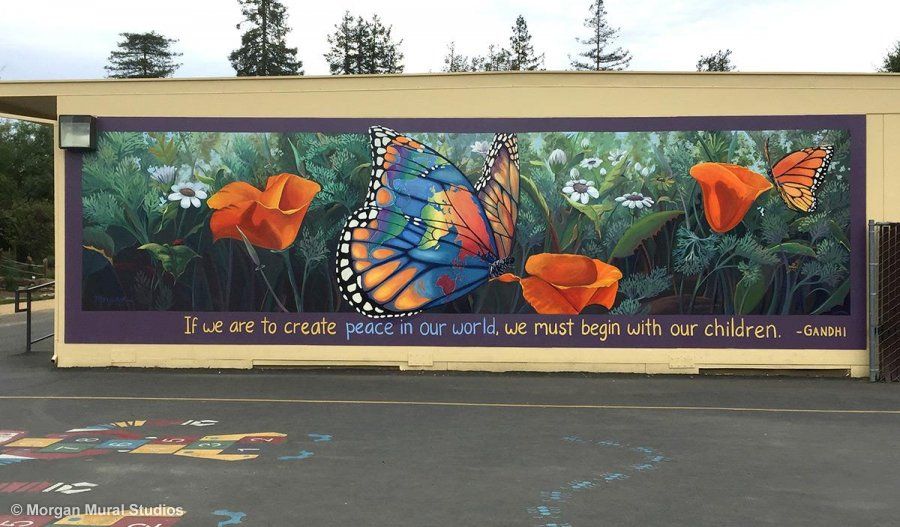
This new mural at Oak Avenue Elementary School in Los Altos, California is titled “Peace in our World.”
I’ve been asked, “How did I come up with the design for this mural?”
The Oak principal and PTA approached me because they wanted to create a work of art that would celebrate the international community at the school. Specifically, they wanted to include a map of the world in the artwork, since they already had a map of the United States painted on their playground.
A map mural concept was a struggle for me because a world map resonates with the literal, analytical side of my brain. It’s a technical depiction of the landmasses on earth. How could I add more depth, symbolism, and meaning to a world map painting? How could I turn it into a work of art? I mulled over ideas for a while, and it felt like trying to rhyme with orange. The world map reminds me of… nothing but the world map.
I offered the school three design directions.
1. A straightforward painting of a map. I included lettering on either side so that the world map aspect ratio stayed accurate. It felt literal, inelegant to me. I didn’t love it:
2. For the second design, I worked with the idea of the planet and felt that would communicate the “one world” message nicely, and be more unifying and poetic than a flat map. I felt better about this design. However, as the principal pointed out, this leaves half of the world unseen, on the other side of the globe.
As I was noodling on how to elegantly incorporate a map, I was drinking a cappuccino and saw what could be mistaken for a world map on the inside of the cup.
I started thinking about another context, maybe more inspiring than a ceramic mug, might I be able to sneak in a world map?
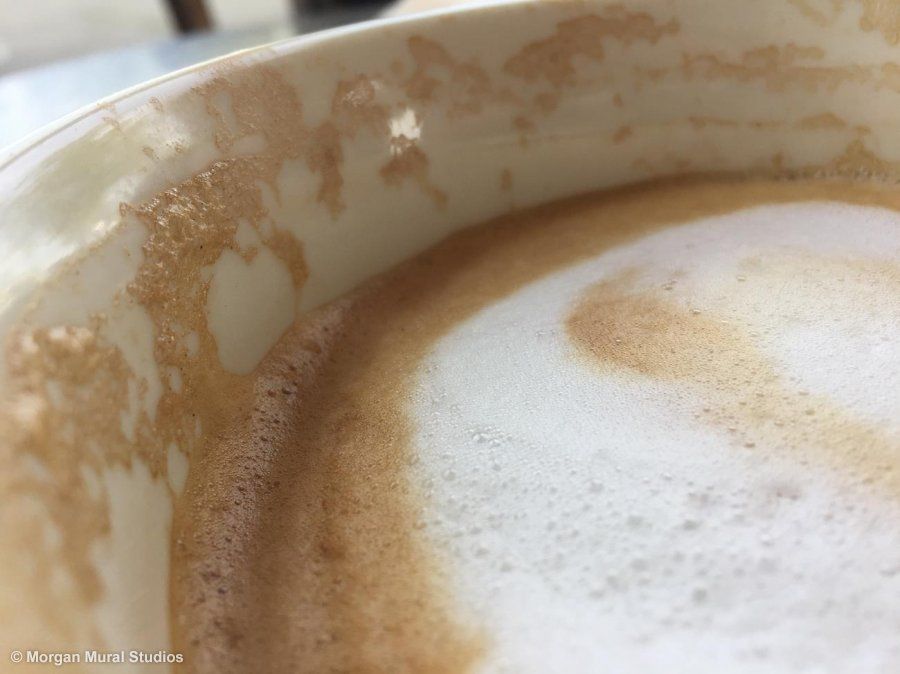
Would it fit on a bird? No. A flower? No. A Butterfly? Hmmm. Maybe…..
And in the painting evolved into this:
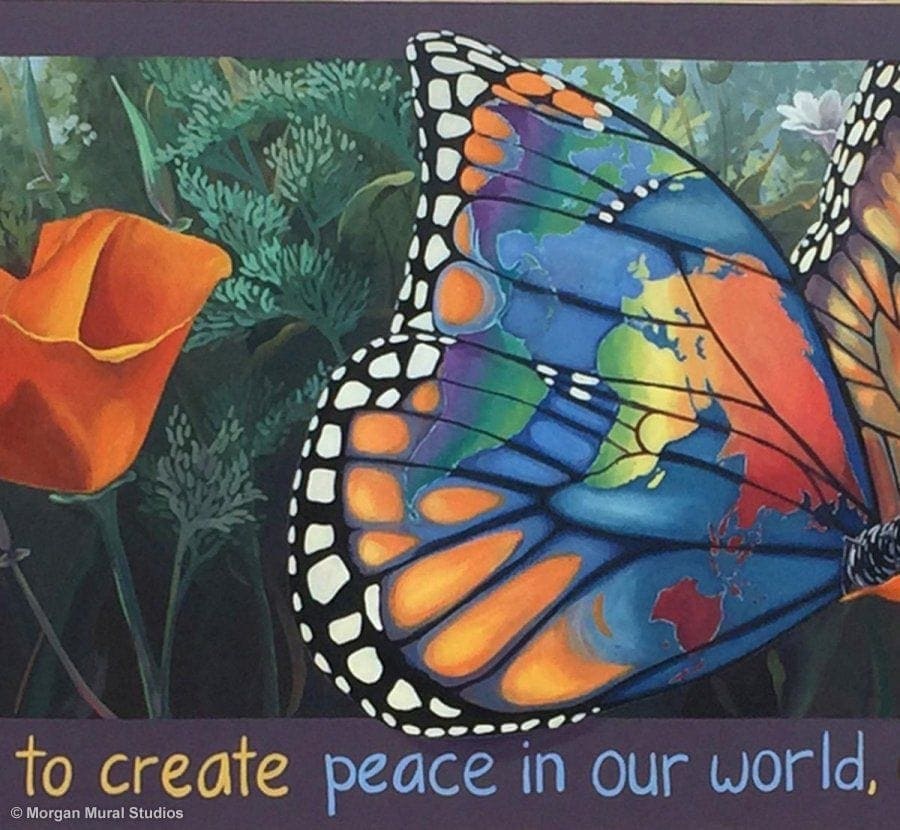
Mara Sippel, a parent at Oak, generously assisted me in painting the mural. When she blocked in the lettering, it was not centered across the bottom. I was about to ask her to repaint the lettering when we noticed that “peace in our world” was perfectly centered under the wing, and maybe if we popped it out in a different color, it would read like a prayer. Thank you, Mara, for the accidental genius.
To me, the quote by Gandhi, “If we are to create peace in our world, we must begin with our children” is sort of sneaky. In the same way, you can’t save the Monarch butterfly, which covers 2,500 miles from Canada to Mexico each year without international cooperation, concerted effort, and systemic change along their migration route, you can’t teach children about peace without a supportive cultural ecosystem. I think that Gandhi is being sneaky because already knows that focusing on the children is actually a gateway to cultivating peacemaking in ourselves and, subsequently, the broader community. If we are to raise a generation of peacemakers, we will have to take a look at our culture of stress and overwork and obsession with chasing dollars which leaves parents, teachers, and caregivers without the time or emotional resources to provide the warm, loving attention that children need to thrive. Throw in a media and food culture that values profits over our welfare, and it looks to me that the task of teaching our children peace is an overwhelming task for parents to undertake alone. It is an effort our whole society would have to participate in.
I had plenty of time to mull over Gandhi’s message while I painted this 35-foot wall, and I came up with more questions than answers. Why aren’t teachers paid in line with the value they are adding to our society? Why does California allow a ratio of 35 kindergartners to one teacher? Who thought that was a good idea? It is absurd to me that we don’t make a well-rounded education for our children a top priority as a society. Our future is dependent on the investments we make in our children now.
What can you and I do to be a part of raising a generation of children that feel safe, loved, and connected so they grow into healthy adults?
I have one idea. It’s my secret weapon as a parent.
Check out HandinHandParenting.org
Warning: I am completely biased. My mother-in-law started Hand in Hand 28 years ago. I have been blessed to learn from the master how to connect with my kids using the tools she taught me. I have learned that when children feel scared, alone, or disconnected, they are more likely to act out with “less-than-endearing” behaviors. As a parent, I am so glad to have the skills to understand those bad feelings are just part of how kids process stress and confusion, and if a loving adult can stay close and listen to their feelings, they emerge from the experience more connected and confident, and back to their perky, resilient selves. Hand in Hand is now in eleven countries, and over 30,000 parents were served last year by a class, talk, or consultation. Their mission is to “raise a generation of involved, creative, visionary problem solvers who will transform the world.” Read her book, Listen. Try out her approach with a child in your life and experience the benefits firsthand.
Painting this mural was inspiring to me. I hope the artwork helps the viewer connect with the concept that our individual actions can and do have a broader impact, the butterfly effect. What we do with our time and attention today has repercussions in time and space that we cannot foresee, possibly generations out. Our potential as peacemakers is certainly less geographically limited than ever before. What we do matters, and we can teach our children that what they do matters. Gandhi’s directive to start with the children triggers a ripple effect, encourages us to look further upstream, and starts with the perky, resilient adult reading this e-mail.
Cheers to peacemaking,
![]()


